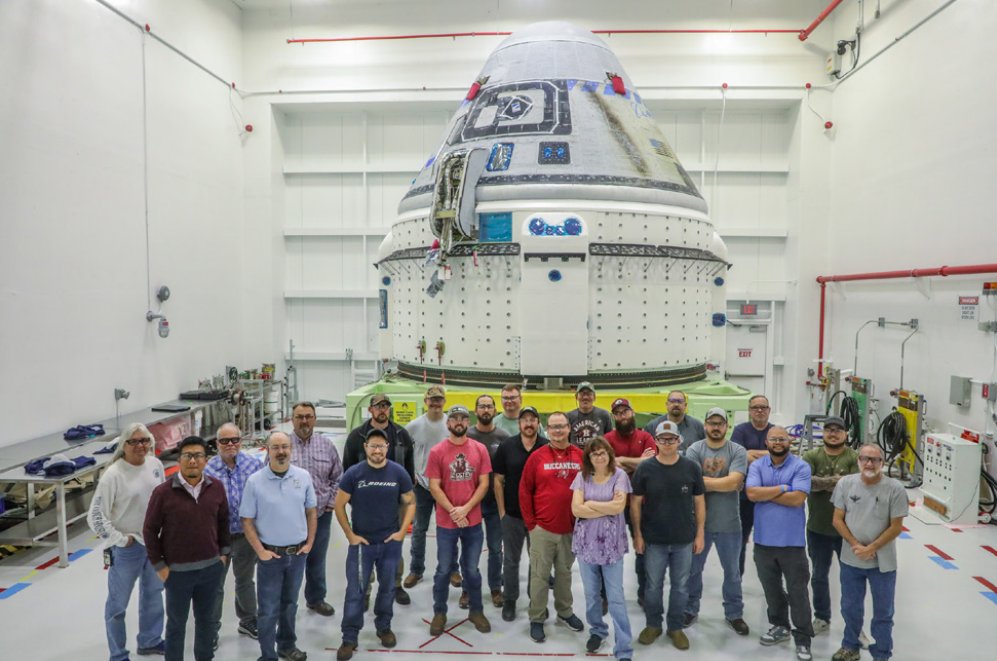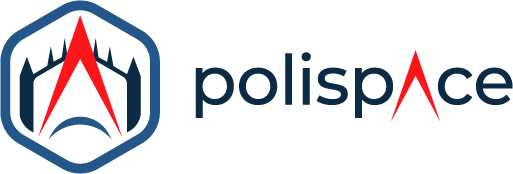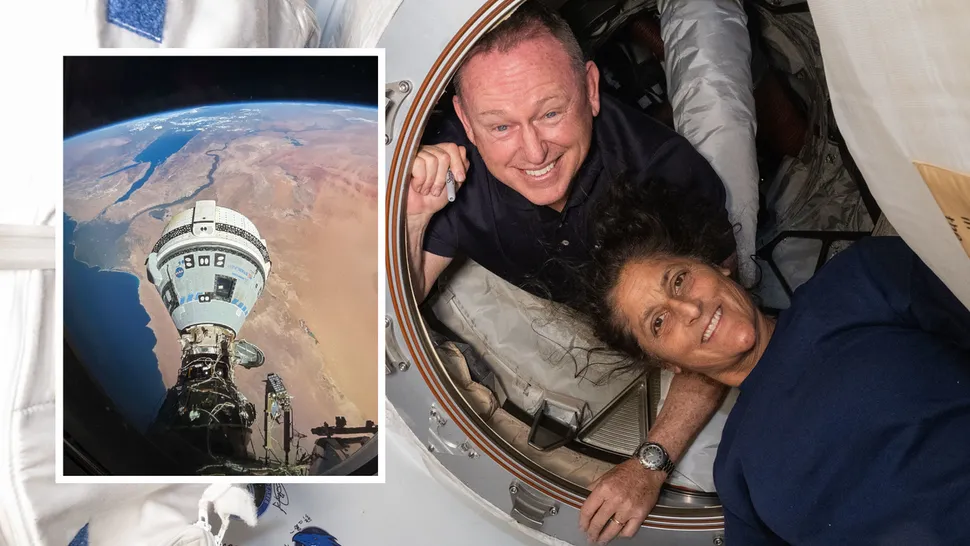What began as a brief demo flight became one of NASA’ s and Boeing’s unexpected story of endurance and resilience. This is the journey of Crew 9, the astronauts of Starliner’s first Crew Flight Test (CFT), who redefined what unwavering commitment, ingenuity, and human determination truly mean.
🛰️ Mission Overview
The CST-100 Starliner capsule, named Calypso, marked a critical milestone in Boeing’s collaboration with NASA under the Commercial Crew Program. Launched on June 5, 2024, aboard a United Launch Alliance Atlas V rocket from Cape Canaveral, the mission carried two highly experienced U.S. Navy test pilots and NASA astronauts, Suni Williams and Butch Wilmore, on what was expected to be a routine 12-day Crew Flight Test (CFT) aimed to validate Starliner’s ability to transport astronauts to and from the International Space Station (ISS), setting the stage for future crew rotation missions. However, this straightforward goal quickly gave way to unforeseen challenges that would reshape the mission’s course entirely.

Soon after reaching orbit and during approach to the ISS, Starliner experienced several technical anomalies. Most notably, five of its 28 Reaction Control System (RCS) thrusters failed during the docking phase. Although engineers successfully restored functionality to four of the five, the malfunction raised concerns about the propulsion system’s reliability and its thermal behavior under operational stress. As a result, the mission shifted from a brief test flight to a prolonged investigation and engineering campaign, prompting extensive on-orbit testing, including hot-fire thruster evaluations while docked to the ISS, and thorough ground-based simulations.

Over the following weeks and months, the mission evolved from a demonstration flight into a long-term investigation and engineering effort. NASA and Boeing engineers closely analyzed telemetry, evaluated performance degradation under thermal loads, and simulated numerous return scenarios. Although confidence gradually increased as 27 of 28 thrusters were eventually verified as functional, the lack of a predictable failure model and potential for further in-flight degradation led NASA to make a pivotal decision. Rather than risk an uncertain return with the crew on board, the agency opted for an uncrewed reentry of Starliner, marking a rare and cautious choice in U.S. human spaceflight history. Meanwhile, Williams and Wilmore seamlessly integrated into ISS operations, supporting scientific research, station maintenance, and participating in spacewalks. As preparations advanced for the arrival of the next SpaceX Crew-10 mission, scheduling constraints further delayed Starliner’s undocking from the Harmony module.

Following nearly three months of orbit and exhaustive propulsion assessments, Starliner finally undocked and autonomously returned to Earth in September 2024. Concluding a 286-day mission that had vastly exceeded its original plan, Williams and Wilmore, who had become indispensable members of Expeditions 71 and 72, returned home via SpaceX’s Crew Dragon capsule Freedom on March 18, 2025. Their extended mission not only highlighted their professionalism and adaptability but also underscored the value of cross-provider collaboration and system redundancy in safeguarding astronaut lives amid unanticipated scenarios.
| Phase | Description |
|---|---|
| June 5, 2024 | Launch from Cape Canaveral |
| June 6, 2024 | Docking delayed due to thruster malfunctions |
| June–August, 2024 | Mission extension confirmed for further testing |
| September 2024 | Starliner completes uncrewed return |
| August, 2024–March, 2025 | Ground and orbital tests conducted |
| March 18, 2025 | Astronauts return via SpaceX Dragon |
👩🚀The Crew Behind the Mission
Suni Williams, an accomplished NASA astronaut and former Navy test pilot, drew on her vast flight and spacewalk experience throughout this extended mission. Her composure and leadership were instrumental as she set a new spacewalk duration record for women and became a symbol of endurance in spaceflight. Her contributions during the prolonged stay demonstrated not only her technical skills but also the physical and psychological stamina vital to long-duration missions.
Butch Wilmore, a veteran astronaut and Starliner’s commander, offered crucial leadership marked by a calm, analytical approach. As the propulsion issues unfolded, his technical insight and ability to collaborate effectively with mission control proved essential in navigating the complexities of the evolving mission. Wilmore’s role in decision-making and problem-solving reflected the core principles of NASA’s crewed mission strategy.


Together, Williams and Wilmore embodied the very essence of astronaut resilience, demonstrating not only operational excellence but also the psychological fortitude required to adapt to a mission that evolved far beyond its original parameters.
🚧 Failures and Engineering Challenges
What began as a routine test flight rapidly evolved into a complex engineering trial, as Starliner encountered significant anomalies during its early mission phases. The most immediate concern arose during the spacecraft’s approach to the International Space Station, when five of its 28 Reaction Control System (RCS) thrusters failed. This unexpected malfunction forced mission controllers to delay docking and adopt a conservative trajectory. Although subsequent diagnostics allowed engineers to recover four of the five thrusters, the incident marked the beginning of a growing list of system-level concerns.
Shortly thereafter, engineers detected multiple helium leaks within the propulsion subsystem, responsible for pressurizing the fuel used by the RCS and orbital maneuvering thrusters. These leaks, while initially minor, compromised confidence in the spacecraft’s ability to safely execute the precise operations required for undocking, deorbit burns, and reentry.
Despite successful in-flight testing that demonstrated partial restoration of thruster functionality, uncertainties remained. Without a reliable model to predict thruster performance under reentry conditions, mission managers faced a difficult decision. NASA’s Commercial Crew Program Manager, Steve Stich, reflected on the complexity of the situation:
“If we had a model to accurately predict thruster behavior through undock and reentry, we might have chosen differently. But the risk was too great.”
Ultimately, the combination of propulsion system instability and modeling limitations led NASA and Boeing to opt for a cautious, unprecedented resolution: returning the capsule uncrewed and ensuring the astronauts’ safe return via an alternate vehicle.

🛠️ Key Testing and Analysis
In the wake of Starliner’s thruster anomalies and helium system issues, NASA and Boeing initiated a rigorous test campaign to assess the spacecraft’s readiness for reentry. This campaign combined experimental hardware trials, high-fidelity simulation, and real-time orbital diagnostics to build a comprehensive picture of system integrity and risk.
One of the core pillars of this effort was a series of seven hot-fire tests conducted on the ground using flight-representative thrusters. These tests simulated the thermal, vibrational, and dynamic loads expected during reentry. They were critical in assessing whether the recovered thrusters aboard Starliner could perform reliably under peak stress conditions. The results revealed partial performance consistency but also pointed to uncertain behavior margins under extreme heating.
To complement physical testing, engineers executed more than 100,000 computer-based simulations, modeling a wide spectrum of potential failure scenarios. These digital analyses explored how combinations of thruster failures, helium loss, or control asymmetries might impact the spacecraft during critical events such as undocking, deorbit burns, and atmospheric descent. While many outcomes showed survivable scenarios, the cumulative risk remained too high without precise predictability.
In orbit, NASA conducted targeted thruster firings aboard Starliner, monitoring parameters such as chamber pressure, valve response, and thermal behavior in microgravity. These in-situ tests confirmed that most of the affected thrusters had recovered some functionality, but also introduced new questions about the long-term stability of the propulsion system under repeated use.
Meanwhile, teams on Earth analyzed returned hardware from previous Starliner flights, including propulsion components and seal systems. These forensic inspections helped correlate observed degradation patterns with possible root causes for the current leaks, offering valuable input for future design improvements.
Finally, the ISS crew and ground support teams rehearsed contingency operations through integrated simulations, preparing for scenarios such as a failed undocking or emergency transfer to another vehicle. These drills ensured that astronaut safety could be maintained regardless of how the situation evolved.
Despite the depth of testing, many of which showed encouraging trends, engineers could not eliminate the residual uncertainty surrounding Starliner’s thruster performance during high-stress flight phases. Given the stakes, NASA made the critical decision to bring Starliner back uncrewed, preserving both astronaut safety and the opportunity to perform detailed post-flight analysis on the capsule’s hardware.
| Test / Analysis | Purpose | Key Insights |
|---|---|---|
| 7 Ground-Based Hot-Fire Tests | Simulate thruster performance during reentry |
|
| 100,000+ Computer Simulations | Model undock, deorbit, and reentry failure scenarios |
|
| In-Orbit Thruster Firings | Assess functionality post-docking in microgravity |
|
| Hardware Inspections (Previous Flights) | Analyze components for leakage and structural issues |
|
| ISS Simulation Exercises | Train for return and contingency operations |
|
🛰️ Life Aboard the ISS
During their unexpectedly extended mission, astronauts Suni Williams and Butch Wilmore became vital members of Expeditions 71 and 72, seamlessly integrating into day-to-day operations aboard the International Space Station. Far from being idle, their time on orbit was marked by a steady pace of high-value work. They supported critical maintenance activities, contributed to cutting-edge research across various scientific disciplines, and played key roles in advancing space exploration goals.
One of the mission’s major highlights was a series of extravehicular activities (EVAs), including three spacewalks. Suni Williams made history by setting a new record for total EVA time by a female astronaut, reinforcing her legacy as one of NASA’s most experienced spacewalkers.
Despite public speculation, NASA maintained that the astronauts were never “stranded.” Their extended stay was the result of deliberate and conservative risk management. Thanks to rigorous planning, onboard adaptability, and coordinated efforts between NASA, Boeing, and international partners, Williams and Wilmore remained safe, productive, and fully supported throughout their time in orbit.

🚀 Departure and Safe Return
After months of strategic coordination and logistical preparation, the arrival of SpaceX Crew-10 aboard the Dragon Endurance provided the long-awaited opportunity to safely rotate crew members. On March 18, 2025, astronauts Suni Williams and Butch Wilmore, along with NASA’s Nick Hague and Roscosmos cosmonaut Alexander Gorbunov, undocked from the International Space Station aboard the Dragon Freedom.
Later that same day, Freedom executed a flawless reentry and splashdown off the coast of Florida, marking the safe return of the crew after an extended and historic mission. The successful landing not only brought closure to a mission shaped by unforeseen technical challenges, but also underscored the strength of human resilience and the value of interagency collaboration. It was a quiet yet powerful conclusion to a chapter defined by perseverance, adaptability, and the enduring spirit of exploration.

🧠 Lessons Learned
The Starliner Crew Flight Test serves as a significant case study in the complexities and imperatives of human spaceflight, offering valuable lessons that extend far beyond the immediate mission. One of the primary takeaways is the critical importance of redundancy. Spacecraft systems must be designed with multiple layers of backup, not only to address isolated failures but also to manage the potential for compounding anomalies that may arise under the dynamic conditions of space. This redundancy ensures that spacecraft can continue to function even in the face of unexpected challenges, safeguarding crew and mission objectives alike.
However, the mission also highlighted the limitations of ground testing. While high-fidelity simulations and lab-based tests are essential components of spacecraft development, they cannot replicate the full spectrum of in-flight conditions and real-world performance. In-flight data and observations provide insights that ground tests simply cannot, especially when the stakes involve human life. This underscores the importance of operational testing in space, where the true resilience of systems and personnel is put to the ultimate test.
The versatility of astronauts also proved to be a crucial factor. Beyond technical expertise, the ability of astronauts to adapt mentally and operationally to unexpected mission changes and extended durations was essential to the success of the mission. Their capacity to respond to new challenges and maintain focus under pressure ensured their well-being and the overall success of the mission. This adaptability is a cornerstone of human spaceflight, where flexibility in problem-solving can often make the difference between success and failure.
Another key takeaway from the Starliner Crew Flight Test was the importance of a unified emergency response. The seamless collaboration between NASA, Boeing, and SpaceX demonstrated a model of cross-organizational coordination that proved invaluable during high-stakes contingencies. This collective approach to mission management ensured that all parties were aligned in their response to emerging challenges, enabling a swift and coordinated effort to resolve critical issues.
Progress in space is often forged not through flawless success, but through the careful navigation of unexpected adversity

The Starliner Crew Flight Test stands as a powerful reminder: Space exploration demands resilience of the spacecraft, of teams, and of the human spirit.
Through unforeseen trials, we push the boundaries of what’s possible.
The journey of Crew 9 will inspire future missions, engineers, and explorers for decades to come.





